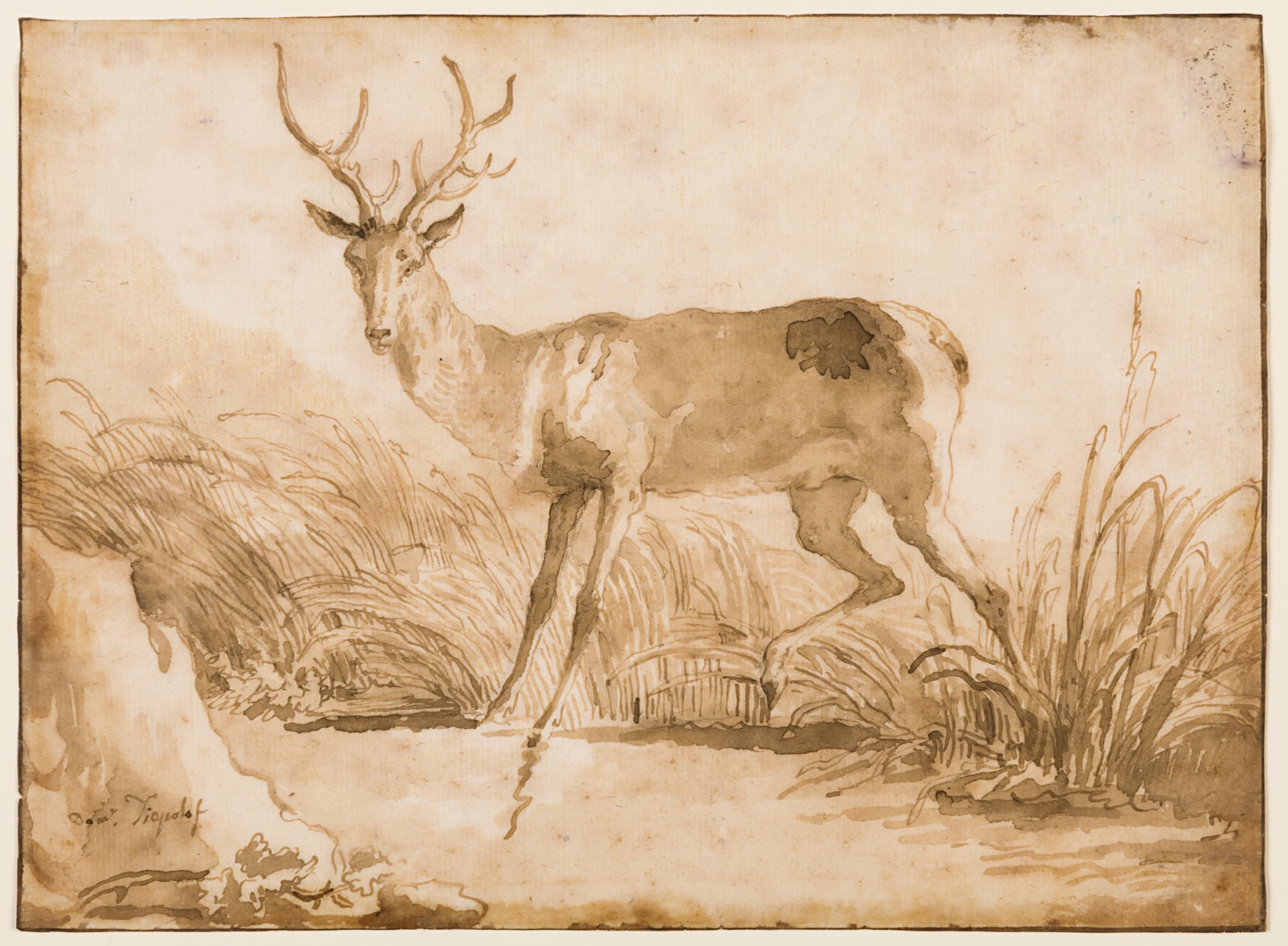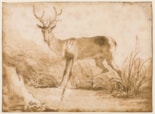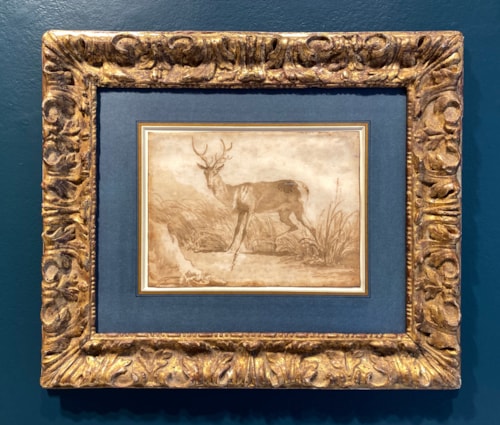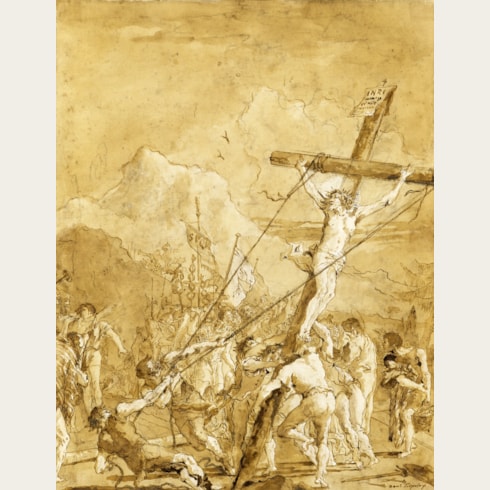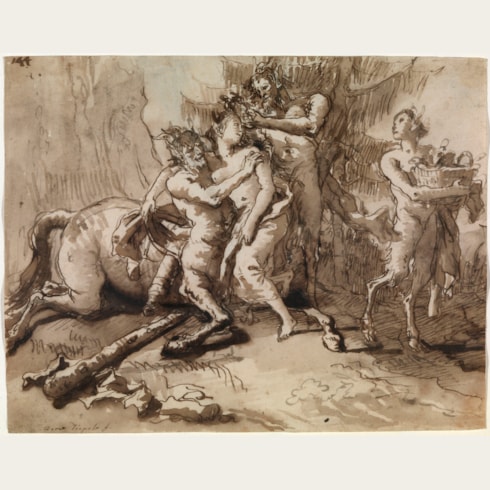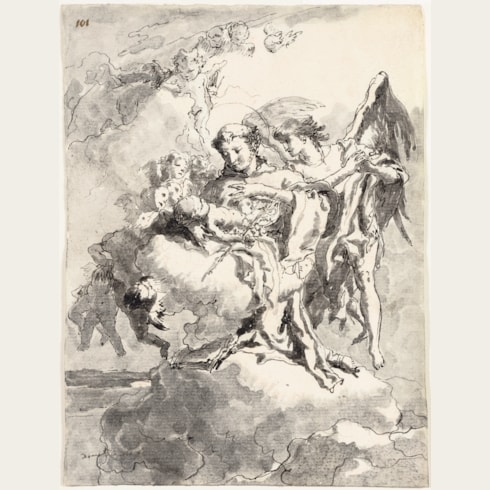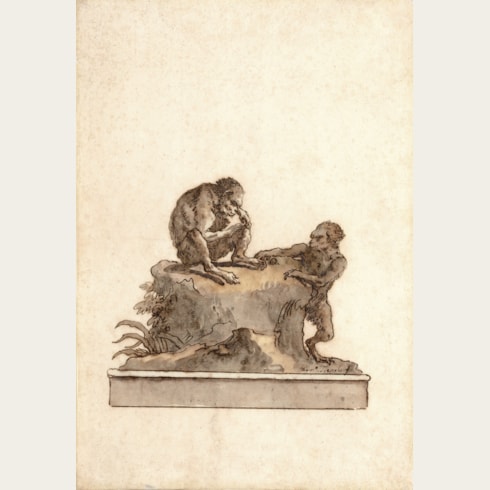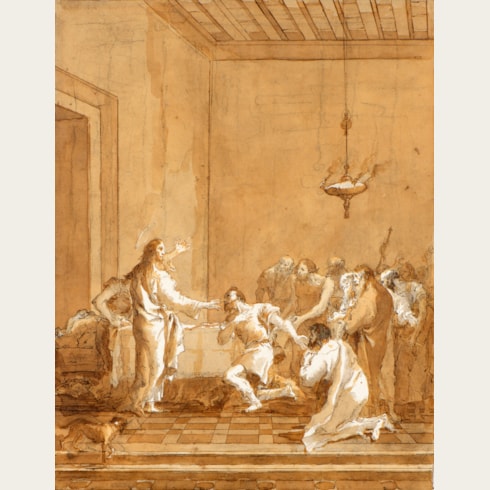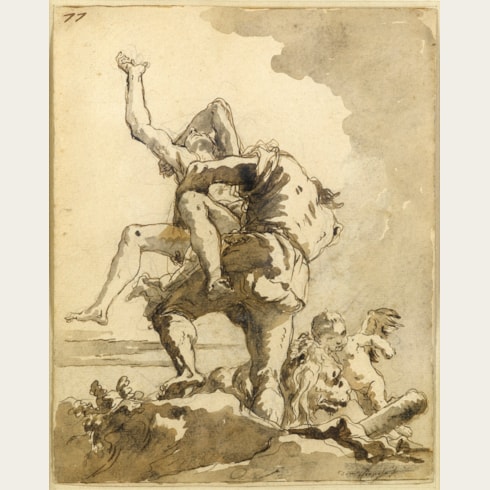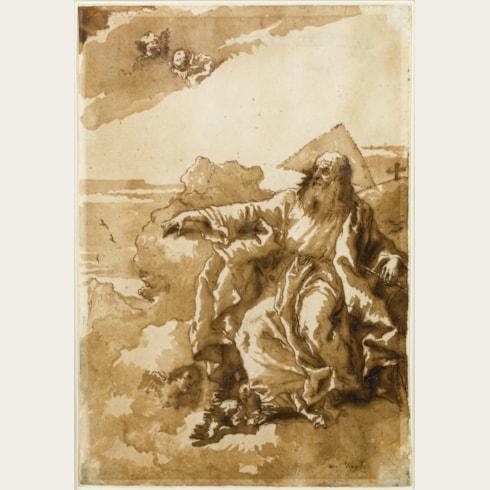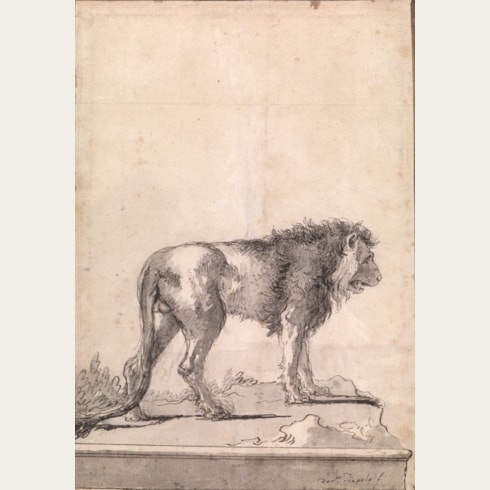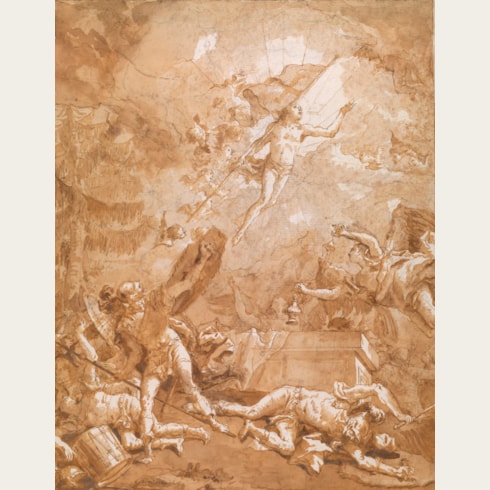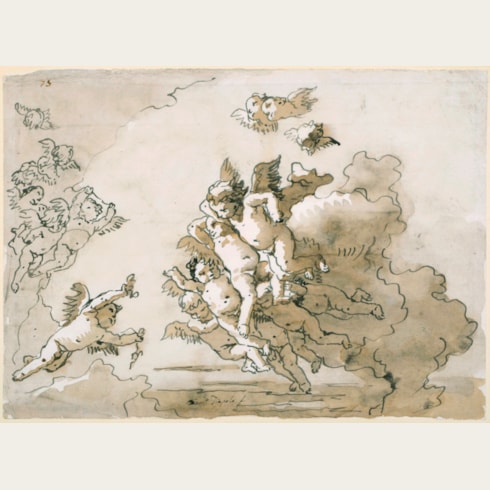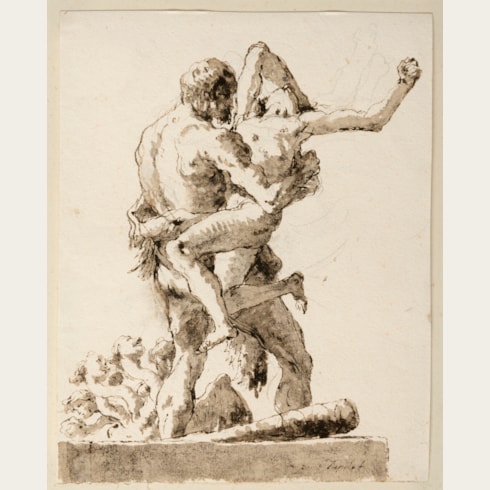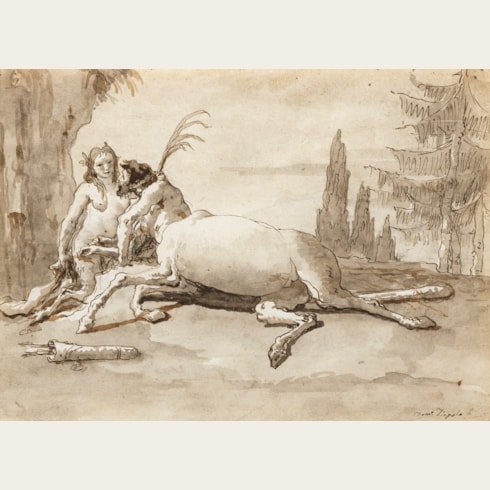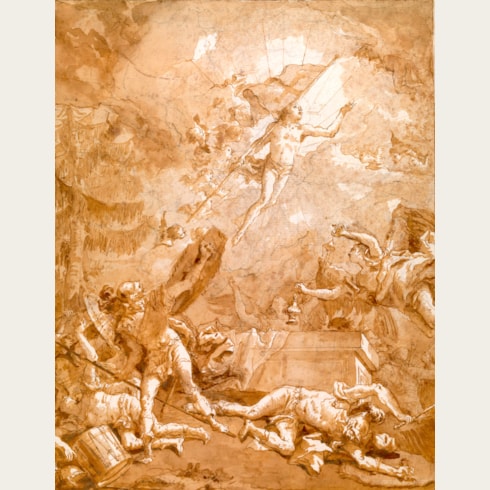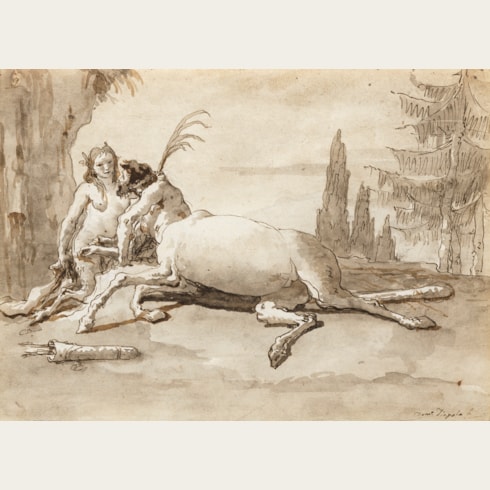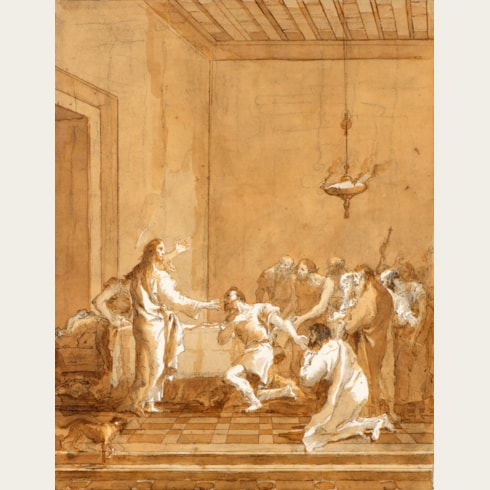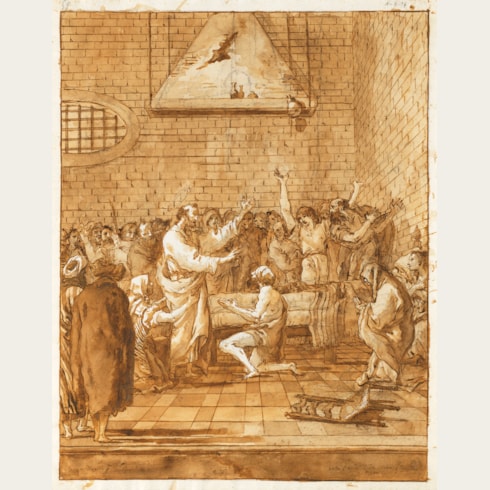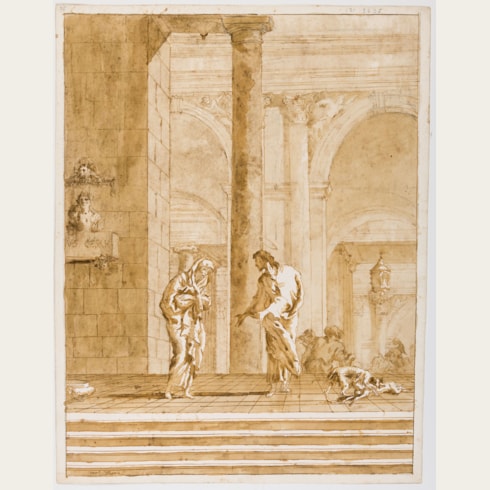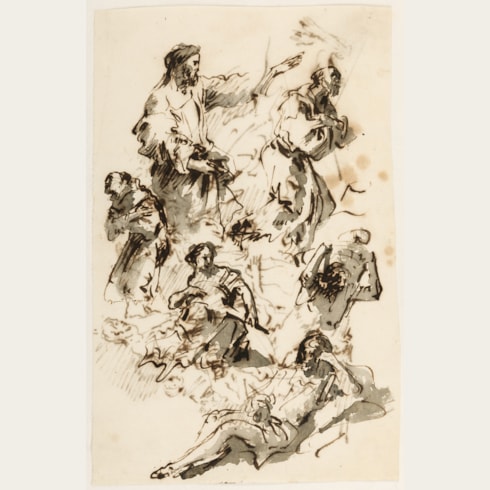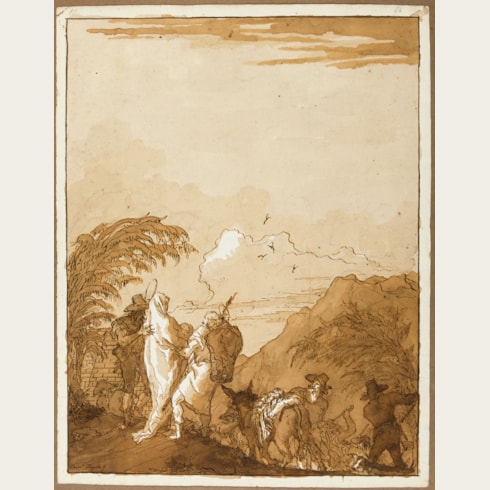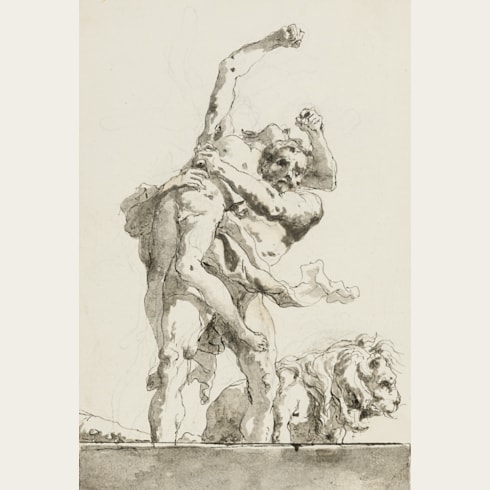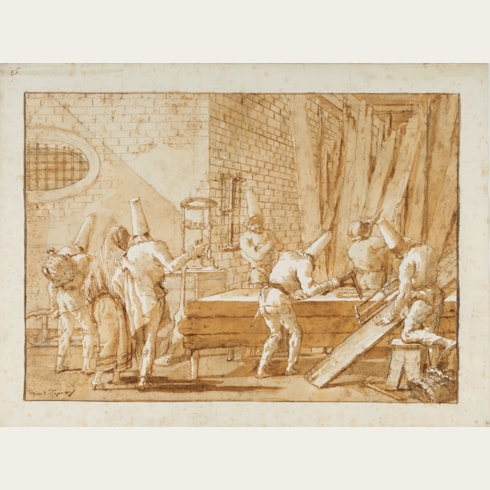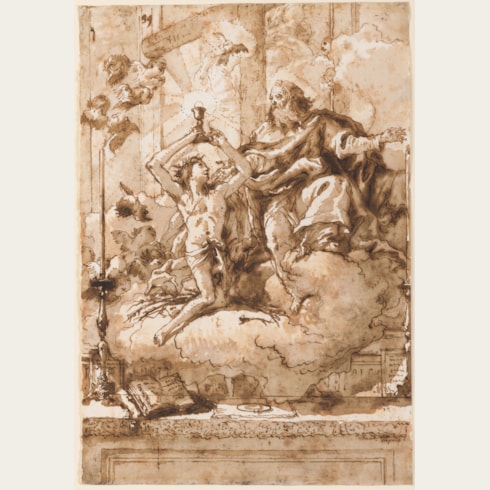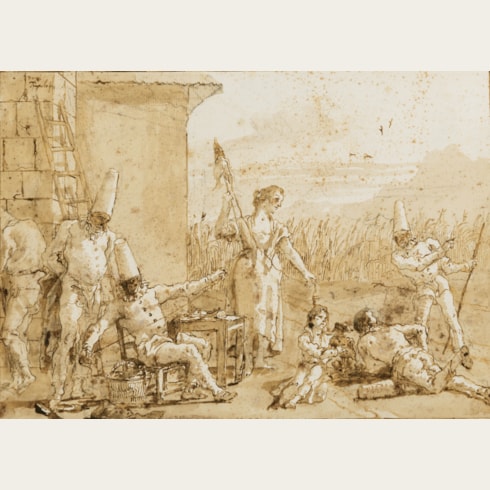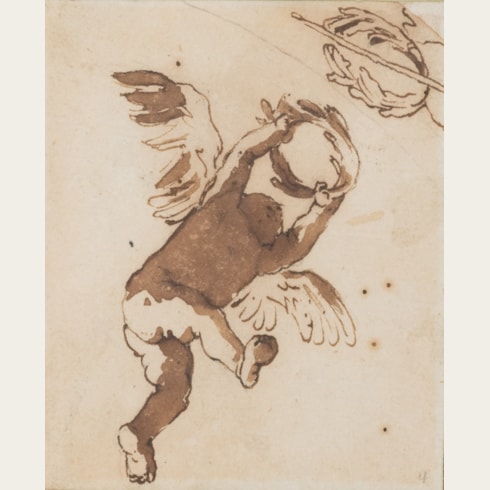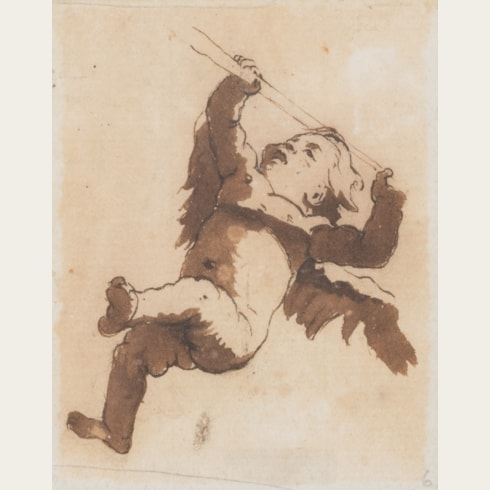Giovanni Domenico TIEPOLO
(Venice 1727 - Venice 1804)
A Stag by a Riverbank
Signed Dom.o Tiepolo f. in brown ink at the lower left.
Numbered 11 in pencil on the verso.
184 x 252 mm. (7 1/4 x 9 7/8 in.)
Byam Shaw further noted of these drawings of animals that ‘if most of these drawings belong to the latter part of Domenico Tiepolo’s career, it is also evident that his interest in drawing animals goes back a good deal further in date...twenty, thirty, even forty years earlier perhaps; and that he collected from one source or another, at that time, certain animal patterns that he kept by him, as he kept other models, for the rest of his life. From one source or another: for the truth is that relatively few of these animals, certainly not the more exotic ones, were observed from life.’
Indeed, a number of studies of animals by Domenico Tiepolo seem to have been based on prints by other artists, notably Johann Elias Ridinger and Stefano Della Bella, as well as paintings and frescoes by his father Giambattista Tiepolo. As Byam Shaw has perceptively written, ‘Many of the individual drawings of animals, from whatever source...must have remained in Domenico’s portfolios, to be used again and again to the end of his career...It is perhaps a little disappointing, or at least disconcerting to our present ideas of artistic proprieties, to find that so few of the animals were drawn from life...But experience of Domenico’s methods does not encourage illusions in this respect; and generally it was not his way to trouble himself with a living model if a pictorial one, his own or someone else’s, was at hand.’
In common with many of Domenico Tiepolo’s studies of animals, the present sheet is derived from an etching of a stag in a forest by the 18th century German painter and printmaker Johann Elias Ridinger (1698-1767). The print is part of a series of etchings of wild animals by Ridinger, with the title Betrachtung der wilden Thiere mit beygefügter vortrefflichen Poesie des hochberühmten Herrn Barthold Heinrich Brockes, published in Augsburg in 1736. (As Byam Shaw has posited, ‘The Tiepolo family, or their way to Würzburg at the end of 1750, certainly passed through Augsburg, and no doubt made the acquaintance of Ridinger, who was then at the height of his career. Did he perhaps present the young Domenico with a collection of his prints?’) The drawing differs from the Ridinger print in the size of the creature’s antlers and the much more simplified landscape background; indeed, Domenico was adept at translating the pose of an animal taken from an earlier print into a more lively and engaging subject for a drawing.
The body of the stag in the present sheet, though not its head, was reused by Domenico Tiepolo at the extreme left edge of a drawing of A Man Looking Through a Fence at a Herd of Deer in the collection of Peter Marino in New York; one of a large series of finished genre drawings of the early 1790s known as the ‘Scenes of Contemporary Life’.
Unlike dogs or horses, stags and deer are relatively uncommon in Domenico Tiepolo’s paintings and drawings, although some appear in one of the overdoor frescoes at Zianigo. A drawing of A Stag and his Family, in black ink and grey wash, appeared at auction in 2011, while three drawings of stags are in the Robert Lehman Collection at the Metropolitan Museum of Art in New York; a sheet of studies of A Stag Lying on the Ground and a Crocodile and a pair of drawings of Two Stags, One Standing and One Lying and A Stag with Four Hinds; the last two drawings also incorporate animals taken from prints by Ridinger. Stags and deer also appear in another drawing from the so-called ‘Scenes of Contemporary Life’; a drawing of Two Old Men Watching Deer formerly in the H. S. Reitlinger collection and sold at auction in 1953, as well as in one of the late series of Punchinello drawings; Punchinello Hunting the Stag in a private American collection.
Giovanni Domenico Tiepolo is assumed to have begun his career in the family studio by copying his father’s drawings, although he also created his own drawings as designs for etchings, a practice which occupied much of his time in the 1740s and 1750s. His first independent drawings for paintings are those related to a series of fourteen paintings of the Stations of the Cross for the Venetian church of San Polo, completed when he was just twenty. Between 1750 and 1770, Domenico worked closely with his father as an assistant, notably in Würzburg, at the Villa Valmarana in Vicenza and the Villa Pisani at Strà, and in Madrid. From the late 1740s he also began to be entrusted with his own independent commissions, and the drawings for these display a manner somewhat different from that of his father, with a particular interest in lighthearted genre motifs.
Soon after Giambattista Tiepolo’s sudden death in Madrid in 1770, Domenico returned to his native Venice, where he enjoyed much success as a decorative painter. He continued to expound the grand manner of history painting established by his father - the ‘Tiepolo style’, as it were – and by 1780 his reputation was such that he was named president of the Accademia di Belle Arti in Venice. Within a few years, however, he seems to have largely abandoned painting. In his sixties and living effectively in retirement at the Tiepolo family villa at Zianigo, on the Venetian mainland, he produced a large number of pen and wash drawings that are a testament to his inexhaustible gift for compositional invention.
For much of the last twenty years of his career, Domenico Tiepolo seems to have painted only occasionally, and instead worked primarily as a draughtsman, producing a large number of pen and wash drawings that may collectively be regarded as perhaps his finest artistic legacy. These drawings were, for the most part, executed as a series of several dozen or more themed drawings, many of which were numbered. Among these are several series of drawings of religious and mythological subjects, as well as a varied group of genre scenes, numbering around a hundred sheets, generally referred to as the so-called ‘Scenes of Contemporary Life’, and a celebrated series of 104 drawings entitled the Divertimenti per li regazzi, illustrating scenes from the life of Punchinello, a popular character from the Commedia dell’Arte.
Domenico’s highly finished late drawings, almost all of which were signed, were undoubtedly intended as fully realized, autonomous works of art. While it is certainly possible that they were produced as works of art to be offered for sale to collectors, almost none of the drawings appear to have been dispersed in Domenico’s lifetime. The fact, too, that many of the drawings are numbered, possibly by the artist himself, and that most remained together in groups for many years after his death, would also suggest that they were retained in his studio throughout his life, as indeed he also kept numerous albums of drawings by his father. It is most likely, therefore, that these late drawings by Domenico were done simply for his own pleasure. Nevertheless, they have consistently enjoyed immense popularity since the artist’s death, and continue to entice collectors today. As Catherine Whistler has noted, ‘Domenico’s spirited and inventive independent sheets have long been appreciated, particularly by French and American collectors of the late nineteenth and early twentieth centuries; his quirky sense of humor, acutely observant eye, and zestful approach to his subjects lend his drawings a peculiarly modern appeal.’
As Michael Levey has also noted of the artist, ‘Domenico Tiepolo’s drawings provide us with the more private side of him, but they also serve to represent his career at all stages. He drew continually: sometimes very closely in the manner of his father; at the opposite remove, in the late Punchinello drawings for example, his manner and matter could never be mistaken for anyone else’s...The key to Domenico is in drawings: he began as a draughtsman and, one is tempted to say, all his paintings betray the draughtsman.’
Provenance
Private collection
Anonymous sale, London, Sotheby's, 9 July 2003, lot 57
Private collection, Bergamo.
Literature

